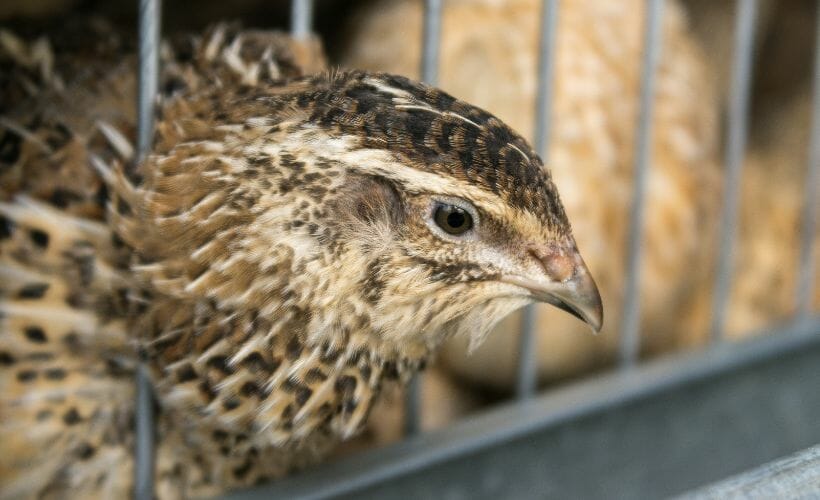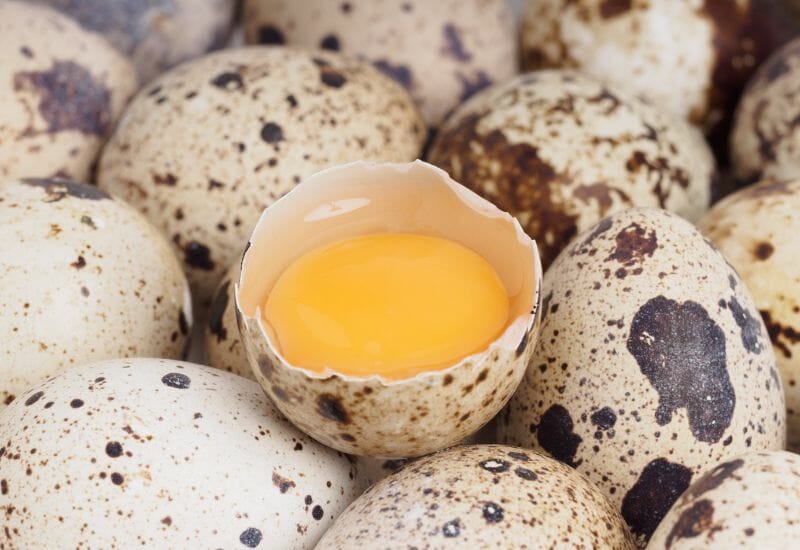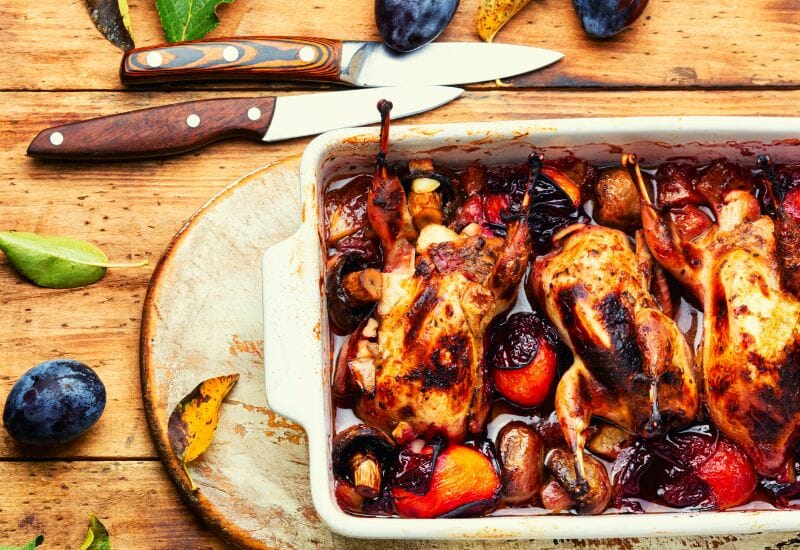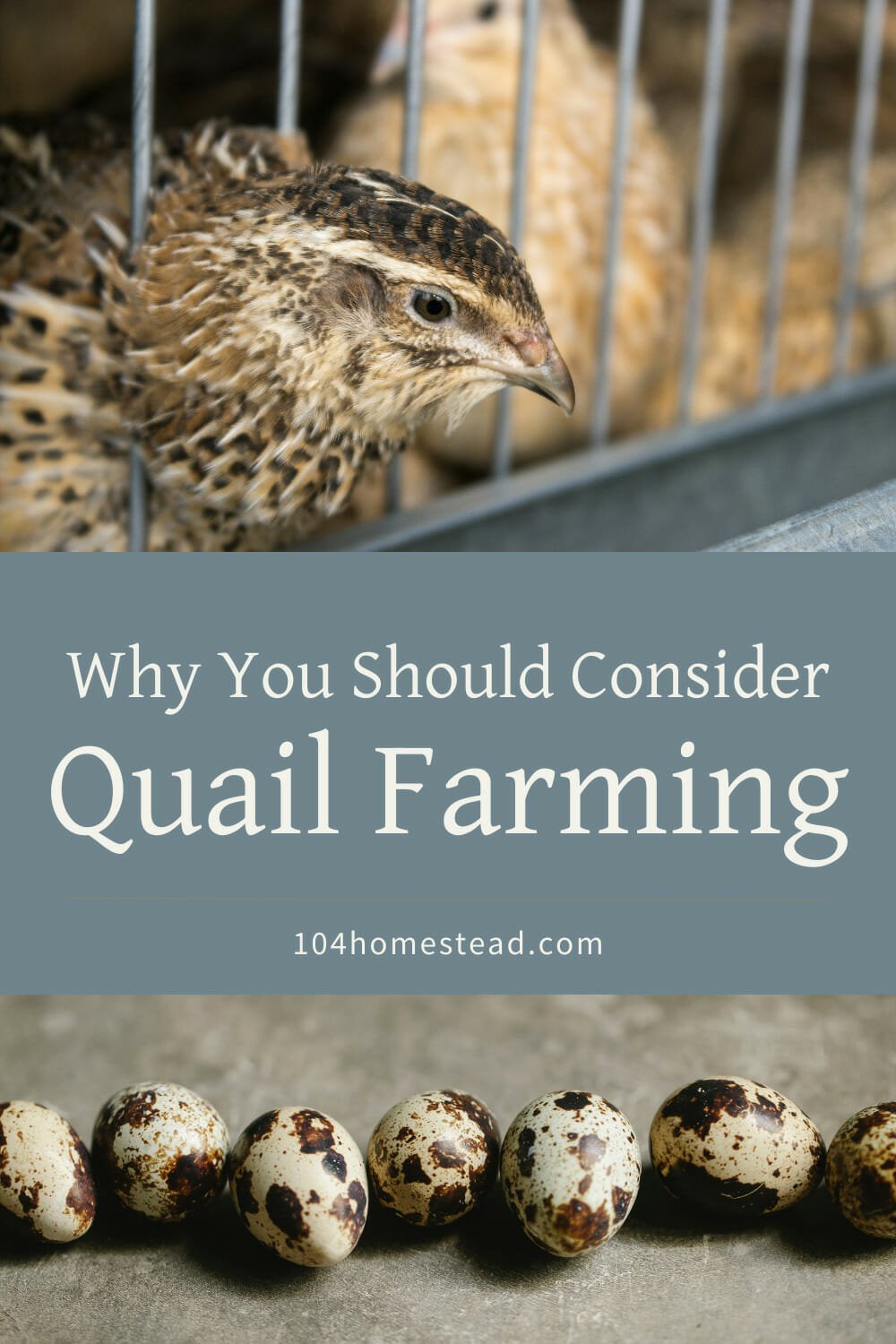Why You Should Consider Quail Farming on Your Homestead
Quail farming is a great way to make money on the homestead by selling eggs, meat, and live birds, no matter how small your property is.

Let’s discuss a bird of a different feather—the cute and personable quail. Raising quail can be a surprisingly easy and beneficial addition to any homestead. But how do you know if it’s right for you? Discover their many uses for food, eggs, and even meat and the variety of ways quail can improve your homestead. With their small size, simple dietary and housing requirements, and abundant advantages, raising quail may be a great choice for you and your family. So let’s look at why quail farming might be right for your homestead.
This post is my mecca for all things related to the raising of quail. Throughout it, you’ll find links to other helpful quail-related information from my own site and other reputable sources.
On average, we have 100 adult Coturnix quail on my homestead throughout the spring, summer, and fall, as well as chicks and juveniles. We sell fertile eggs online, eating eggs at our farmstand, and we sell meat and live birds privately. I have learned a lot about quail farming in the last ten years, and I’m excited to share with you all of the things I’ve learned along the way.
So let’s see if quail farming is right for you…
Reasons Why Quail Farming Might Be Right for You
Right out of the gate, let’s discuss some of the reasons why quail farming might be right for you and your family.
The eggs are a delicacy and bring in more money than chicken eggs.
If you decide to raise quail, you’ve got to try your hand at making Little Devils and other quail egg delicacies. They’re also excellent pickled as a high-protein snack. It takes three to four quail eggs to equal one chicken egg, but that’s not an issue because quail are egg production machines, laying 300+ eggs per year. I highly recommend a pair of egg scissors so you don’t have to crack a bunch of eggs.
Quail eggs offer more iron per gram than chicken, duck, turkey, or goose eggs.
Nutrition-wise, quail eggs are a powerhouse of essential nutrients, offering twice as much protein per gram as chicken eggs. They have three times the amount of Vitamin B12 and five times more Vitamin A. Quail eggs also contain high levels of riboflavin, thiamin, niacin, and folate. Plus, they’re a low-calorie option, containing only about 14 calories per egg. Quail eggs are also a great source of omega-3 fatty acids and cholesterol, both important elements for a balanced diet.
You can have male quail in your flock without annoying your neighbors.
This point is great for us that live on a non-traditional homestead. Males have a beautiful cooing crow that is nothing short of musical. Females are known for their melodic and almost whispered coos. Their calls are much gentler sounding than their male counterparts. They quietly communicate their presence with a gentle coo as they search for food or find a perfect spot to build their nest. It’s a wonderful sound to hear on the homestead.
Quail cost less than traditional poultry because they are smaller.
Quail use less feed and bedding than their larger poultry counterparts. In fact, with wire bottom cages, there is no bedding to deal with. Feed-wise, we calculated it to be about $2.10 per month to feed an adult quail. They don’t require a large area to thrive, meaning you can get the same amount of eggs from a fraction of the space. Most quail require only one square foot of floor space per bird, 1/6th the space you would need for a chicken.
They are very low maintenance, and they’re so fun to watch.
Quail are bizarre little birds that do the strangest things. Many things they do will scare the bejeezus out of you when they first do it. Check out these odd behaviors you might see in your quail.
They’re also just as hardy as chickens and ducks. Even in rain, snow, and extreme temperatures, quail can withstand more than you might think. Ours have done beautifully, even with the extreme winters we have here in Maine.
You can sell juvenile and adult birds for eggs, meat, or hunting dog training.
From eggs, meat, or training dogs, quail provide several revenue opportunities. Most people sell an adult breeding trio for around $35 or day-old chicks for $3 each. An 18-pack of eggs sells for $7 in my area. Quail meat vacuum packed and frozen sells for about $25 for two bird packs. I’ve even seen people selling quail feathers for crafts on Etsy.
Quail lay an egg almost every day from 6 weeks on.
If you’re looking for an incredibly short turnaround on eggs, quail are the way to go! On average, quail begin laying eggs at around six weeks of age (give or take, depending on the breed). This timeframe can be slightly prolonged in colder climates and areas where supplemental light is needed in the winter, but it’s still much shorter than the 16-18 weeks chickens require.

You can often have quail when you can’t have chickens.
Laws governing poultry keeping on residential properties are often more lenient regarding quail – meaning you can often have quail when laws determine you can’t have chickens. This is great for the non-traditional homesteader. If you are not permitted to have livestock, you can keep a trio of quail indoors as pets that provide breakfast.
The Difference Between Quail & Chickens
I dive into things wanting to know everything you could possibly need or want to know. Before getting my first quail, I read quite a few books, and two I really enjoyed were Urban Quail-Keeping and Quail: Getting Started.
Urban Quail-Keeping is written by experienced quail-keeping veteran and breeder Nick Williams. Written in an easy-to-understand, engaging, and informative style, it introduces the reader to what it takes to look after quail and the finer details of raising the birds. Nick provides step-by-step instructions on everything from feeding and housing to health and genetics.
Quail: Getting Started is tailored to those with little to no experience with quail farming. Although it is a small book, it is chock-full of information, from introducing quail and setting up a coop to tips and tricks for handling the birds without stressing them out. It also provides detailed instructions for housing and feeding and advice for selecting the right quail for your needs.
Storey’s Guide to Poultry also has a small section on quail. It’s a book I like to have on hand because it suits all poultry.
Quail Don’t Lay Eggs in a Nest
I figured a quail would be like a chicken in a smaller package. In some cases, they are similar, but these are game birds, so in some ways, they are completely different.
Often quail don’t nest (see more below); they just lay an egg wherever. The negative of that is that they also rarely brood. If you plan to breed and grow your quail “business,” you’ll need an incubator. Never one to pay retail for anything or buy something I could easily make, I’ve been looking into plans for DIY incubators using recycled/upcycled materials.
The internet would have you believe that incubating and brooding Coturnix quail is difficult. I’m here to let you in on a secret… it’s not. Forget fumigation and floating techniques. It’s really no different than incubating a chicken egg. The only difference is that it takes less time, and you might as well forget about candling. You pop your eggs in the incubator and start the clock (if you have a quail egg turner, otherwise you do have to turn them).
You can learn how to incubate and brood your quail by clicking here.
Quail Are More At Risk to Predators
Quail are more at risk to predators than chickens and need reinforced enclosures. Using heavier gauge wire can make it harder for predators to break in and ensure the safety of the quail. Additional measures to consider include burying the bottom of the enclosure into the ground and using a mesh top to provide extra protection.
Which quail breeds should I choose?
There are several quail breeds to choose from. The most common breeds are Coturnix, Bobwhite, California, and Button. Cotunix quail are the most popular, the most profitable, and the one I’m partial to and raise on my homestead.
The Coturnix quail make great homestead birds because they are hardy and resilient, even in less-than-perfect conditions. Plus, they are easy to care for and live long, productive lives. Unlike other quail breeds, they are also easily tamed, making them great pet birds for children and adults alike. They also produce more eggs than other breeds and are especially suited for small spaces, making them excellent for urban farming operations. In short, they are a perfect homestead bird.
Are quail hard to take care of?
Quail are very easy to raise. If you’ve ever had a pet parakeet, you can handle quail farming. You may raise them on wire for convenience because it’s easy to clean. If you do this, I recommend sloping the floor just a bit so the eggs roll to the front for easy collection. You may prefer to raise your quail on grass instead. If you have the space, this is a great option. Allowing them to live in a more natural environment promotes several behaviors that many quail keepers believe have been bred out of them (like hatching their eggs).
If you raise your quail indoors, they don’t need extra care in the winter. You will want to cover the housing with tarps during extreme weather for outdoor quail and provide thawed water. We’ve found it’s easiest to raise our quail outdoors during the spring, summer, and fall and move them into the garage for the worst of winter. It’s not heated, but it makes their care easier.
How long does it take to raise quail for meat?
The timeline for raising quail for meat is significantly shorter than for other poultry. The general rule of thumb is that it takes 6-8 weeks to raise quail for meat, but this time frame can vary depending on the breed of quail being raised and the environment they’re raised in. Heritage breed chickens can take up to a year to reach the appropriate weight for processing. Even hybrid meat production chicken breeds, like Cornish Cross, take 8-9 weeks, making a massive mess during that time. I’ve spent many years raising Cornish Cross, and it’s something I decided I don’t ever want to do again.

How much meat comes from a quail?
The meat you get from your quail will depend on the breed you raise. The most common meat breeds are Coturnix and Nothern Bobwhite. A standard Coturnix will produce approximately 10 ounces of meat. A jumbo Coturnix will produce around 14 ounces of meat. Northern Bobwhite quails are smaller and produce 6-10 ounces of meat per bird.
Quail meat and chicken may have a similar flavor profile, but quail is far more flavorful and succulent. Quail has a unique flavor, a combination of duck and chicken flavors. However, the flavor of farm-raised quail will depend on how it’s raised and what it’s fed, making it more akin to chicken in taste. The bones of this bird are small and tender enough to consume for quail farmers seeking the ultimate culinary experience.
How many years does a quail live?
In captivity, quail typically live anywhere from 2-5 years, depending on the dietary and environmental conditions they are being kept in. To keep a quail healthy, a range of factors must be considered, such as the size of the enclosure, the amount of space, and the number of enrichment activities available. Additionally, the diet must be carefully monitored to ensure they receive the proper nutrients, minerals, and vitamins. The food quality and the frequency at which it is offered can directly impact quail’s lifespan and health. Fodder can expand the nutrients in your quail’s diet.
How much money can you make when starting quail farming?
Getting started with quail farming requires very little investment. If you have the skills and materials to make a quail coop or cage system, or a free rabbit hutch available, you can start with a small setup for less than $50. Starting with a quad (one roo and three quail hens), you could expect approximately 750 eggs in the first year. If you sell them as eating eggs, you can make about $290. Granted, this doesn’t account for your expenses or the eggs you might consume. Choosing to hatch the eggs instead of selling them, you can make $250-1000 for live birds depending on your hatch success rate, market, and the age you are selling them.
There are ways to make money with quail farming, but it’s not a get-rich-quick deal. As I see it, if you’re getting food from your backyard and it’s not costing you money, you’re doing well.
Where You Can Buy Quail
You’ll be better off getting your quail locally, as quail eggs and live quail chicks don’t travel well. When you’re buying quail locally, make sure to examine them closely. You should see if the birds are healthy, alert, and free of any visible parasites or illnesses. Also, look for signs of malnutrition, such as overly thin or featherless birds. Buying quail from a reputable breeder or farm ensures the birds are healthy and properly cared for.
If you must purchase online, it’s important to evaluate the reputation and track record of the supplier. Look for suppliers with a solid reputation for providing healthy and genetically diverse quail eggs and chicks. Online reviews and customer feedback can provide valuable insights into the reliability and quality of their products.
Purely Poultry, Murray McMurray Hatchery, and Strombergs Chicks & Game Birds offer fertile eggs and day-old quail chicks.
If you’ve found value in this blog post and enjoyed reading it, why not share it with your Pinterest community? Pin the image below and spread the love!

So, backyard quail experts, do you have any suggestions or important experiences to share? Does the quail farm business sound like it might be right for you?
Looking for even more tips on raising Coturnix quail? Check out my dedicated site, Forget-Me-Not Quail Farm, for feeding guides, housing tips, and everything you need to keep your covey thriving. And for a quick-start guide to avoiding common quail-keeping mistakes, grab a copy of my book 5 Mistakes New Quail Owners Make. It’s packed with practical advice to help you raise happy, healthy quail!

